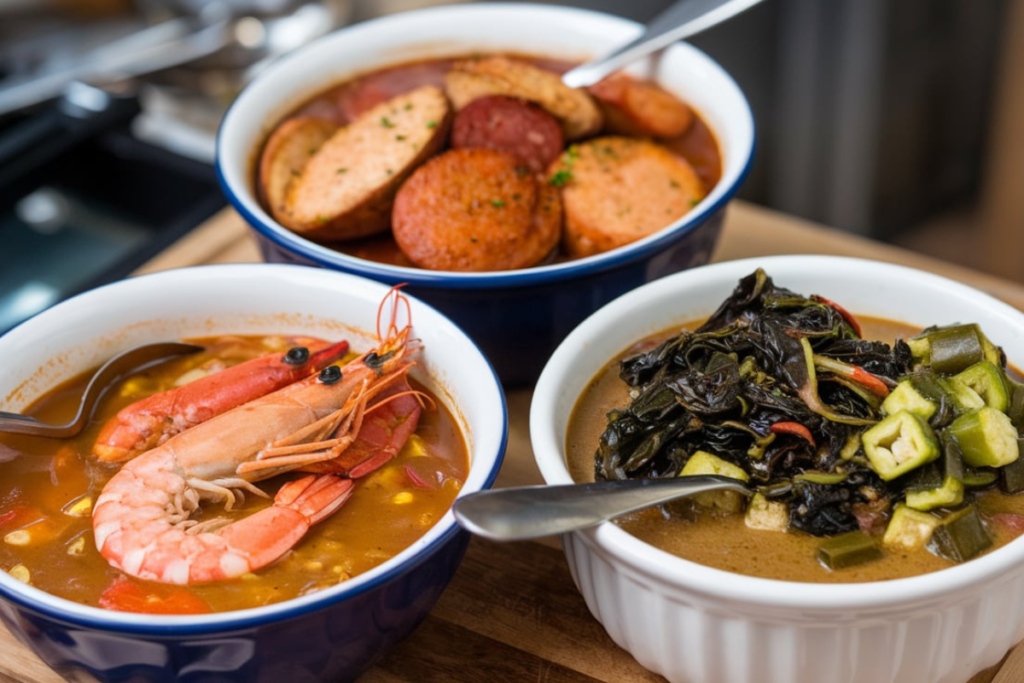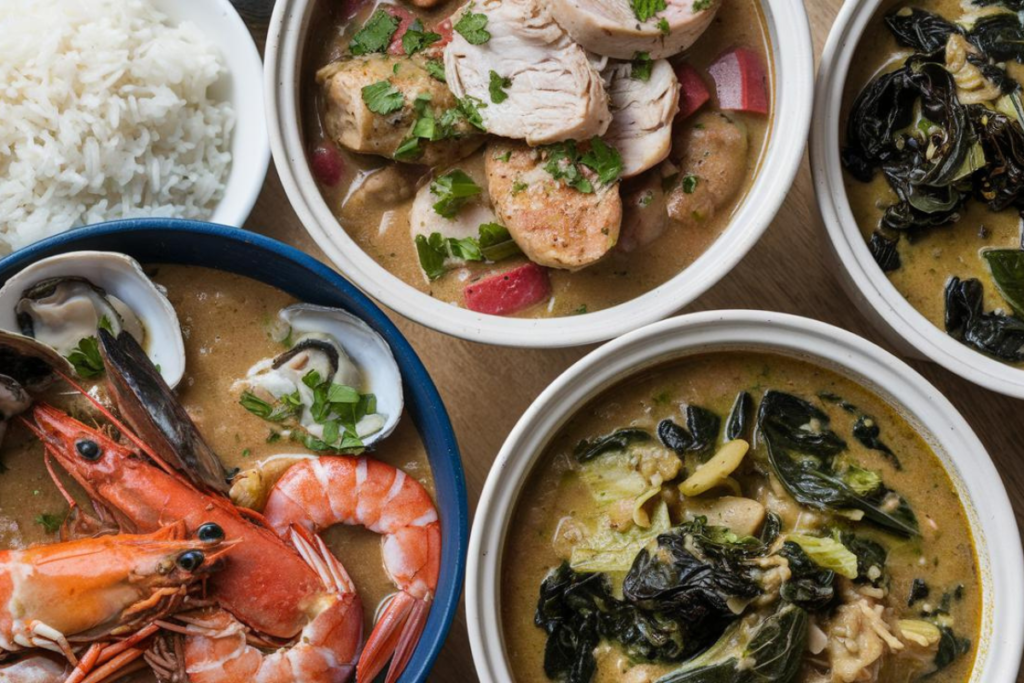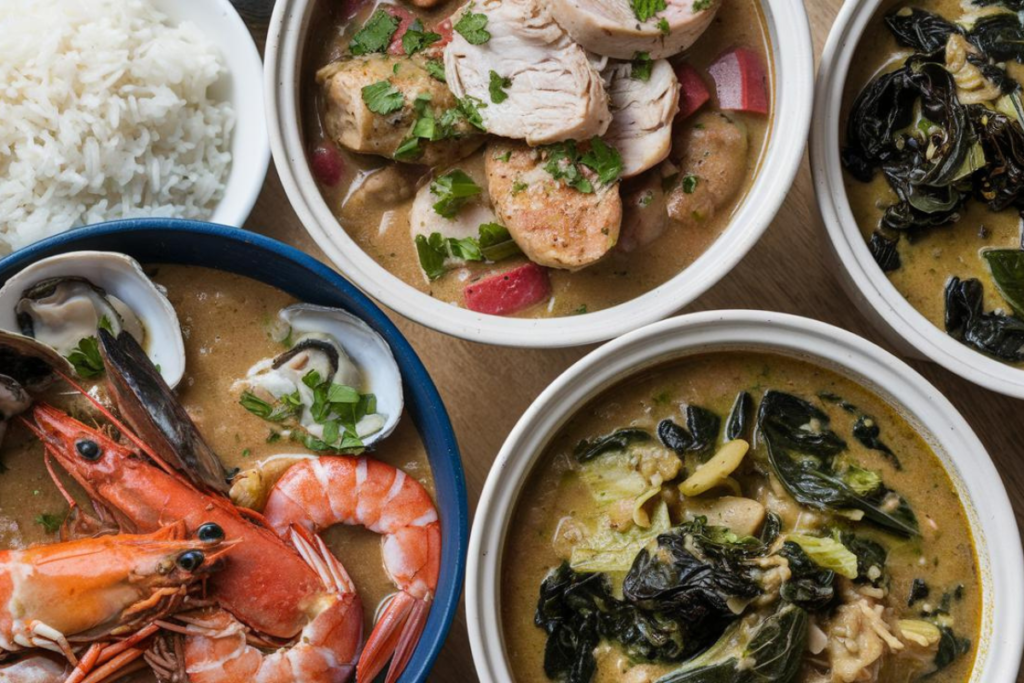Gumbo is a beloved dish that has come to symbolize the rich and diverse culinary traditions of Louisiana. This hearty stew, which blends a variety of ingredients and flavors, stands as a cornerstone of both Cajun and Creole cuisines. But did you know there are three distinct types of gumbo? Understanding the differences between these varieties can deepen your appreciation for this iconic dish and enhance your culinary skills. In this article, we will explore the three main types of gumbo, delving into their unique ingredients, preparation methods, and cultural significance.
Introduction to Gumbo
Gumbo is more than just a meal; it’s a reflection of Louisiana’s cultural melting pot. The dish has evolved over centuries, influenced by the diverse culinary traditions of West Africa, France, Spain, and Native American cultures. Gumbo’s adaptability and rich, complex flavors have made it a favorite not just in Louisiana but across the United States. Knowing the differences between the three types of gumbo can help you master the art of making this dish and appreciate the nuances that make each version special.
To truly understand what distinguishes these types of gumbo, it’s essential to explore their origins and development. The history of gumbo is as rich as its flavor, with each version reflecting the unique ingredients and cooking methods of the regions where they evolved. According to the Southern Foodways Alliance, gumbo’s origins can be traced back to West African, French, and Spanish cuisines, which were brought together in the cultural melting pot of Louisiana.
The History and Evolution of Gumbo
Origins of Gumbo
Gumbo’s roots can be traced back to West Africa, where okra was commonly used in stews. The word “gumbo” itself is derived from the West African term “ki ngombo,” meaning okra. When enslaved Africans were brought to the Americas, they brought this ingredient with them, integrating it into the local cuisine. The French settlers contributed the roux, a mixture of flour and fat used to thicken the stew, while the Spanish influence introduced peppers and tomatoes. Native American contributions included filé powder, made from ground sassafras leaves, which added both flavor and thickness to the dish.
Development Over Time
As gumbo evolved in Louisiana, it became a staple in both Creole and Cajun cooking. Creole gumbo, often featuring seafood and tomatoes, developed in the urban kitchens of New Orleans, influenced by the city’s diverse population. In contrast, Cajun gumbo emerged in the rural areas of Louisiana, characterized by a darker roux, game meats, and the absence of tomatoes. These differences in ingredients and preparation reflect the varied cultural and geographical influences that shaped each type of gumbo.
Introduction of the Three Types
Gumbo is a versatile dish, and while there are many variations, three main types have emerged as the most popular and widely recognized: Seafood Gumbo, Chicken and Sausage Gumbo, and Gumbo Z’Herbes. Each of these types has its own distinct ingredients, flavor profile, and preparation techniques, making them unique in their own right.
Understanding the Basics of Gumbo
Key Ingredients Across All Types
Despite the differences between the three types of gumbo, there are several key ingredients that are common to all versions:
- The Holy Trinity: This combination of onion, celery, and bell pepper forms the flavor base of all gumbos. These vegetables are sautéed in the roux, creating a rich, aromatic foundation for the dish.
- Roux: The roux is a critical component, acting as both a thickener and a flavor enhancer. Depending on the type of gumbo, the roux can range from a light blond to a deep, dark brown.
- Proteins: While the proteins used in gumbo vary depending on the type, common choices include chicken, sausage, and a variety of seafood.
- Thickening Agents: Okra and filé powder are traditional thickening agents used in gumbo. Okra provides a natural thickening effect and a unique texture, while filé powder, made from ground sassafras leaves, is often added at the end of cooking to add both thickness and a distinctive flavor.
The Importance of Thickening Agents
Thickening agents play a crucial role in gumbo, giving the dish its signature hearty texture. Okra and filé powder are the most traditional choices, each offering its own unique characteristics. Okra is often added during cooking to naturally thicken the stew, while filé powder is typically sprinkled on just before serving, adding both thickness and an earthy flavor. The choice of thickening agent often depends on personal preference and regional traditions.
Cooking Techniques
Gumbo is a dish that benefits from slow cooking, allowing the flavors to meld and develop over time. The key to a great gumbo lies in patience—whether you’re browning the roux, simmering the broth, or slowly cooking the proteins, each step should be given the time it needs to reach its full potential. Low and slow cooking not only enhances the depth of flavor but also ensures that the ingredients are tender and well-integrated.

The Three Types of Gumbo: An Overview
1. Seafood Gumbo
Seafood Gumbo is a coastal delight, often associated with the Creole tradition. This type of gumbo is typically made with a variety of seafood, such as shrimp, crab, and oysters. It often includes a lighter roux, which allows the delicate flavors of the seafood to shine through. Okra or filé powder is commonly used as a thickening agent, adding to the dish’s unique texture and flavor.
- Main Ingredients: Shrimp, crab, oysters, fish (optional)
- Characteristics: Lighter roux, often includes okra or filé powder
- Regional Variations: Differences between Creole and Cajun seafood gumbo
2. Chicken and Sausage Gumbo
Chicken and Sausage Gumbo is a hearty, robust version that is a staple in Cajun cuisine. This gumbo typically features a dark roux, which gives the dish a deep, rich flavor. Andouille sausage is a common ingredient, adding a smoky, spicy kick that complements the chicken. Some variations also include tomatoes or okra, depending on regional preferences.
- Main Ingredients: Chicken (often thighs or whole), andouille sausage
- Characteristics: Darker roux, heartier and more robust flavor
- Variations: Addition of tomatoes, okra, or filé powder based on regional preferences
3. Gumbo Z’Herbes
Gumbo Z’Herbes, also known as “green gumbo,” is a unique variation traditionally associated with Lent and Catholic traditions. This gumbo is made with a variety of greens, such as collard, mustard, and turnip greens, and is traditionally meatless. However, modern adaptations often include smoked meats for added flavor. Gumbo Z’Herbes is a flavorful, nutritious option that stands out from the more common meat-based gumbos.
- Main Ingredients: Variety of greens (collard, mustard, turnip), sometimes includes smoked meats
- Characteristics: Traditionally meatless, associated with Lent and Catholic traditions
- Modern Variations: Inclusion of meats or vegetarian/vegan adaptations

Seafood Gumbo: The Coastal Delight
Ingredients and Preparation
Seafood Gumbo is often made with a combination of shrimp, crab, and oysters, though fish can also be included. The key to a great Seafood Gumbo is using fresh, high-quality seafood, as the flavors are delicate and can be easily overpowered. The seafood is typically added towards the end of the cooking process to prevent it from becoming overcooked and rubbery.
- Seafood Stock vs. Chicken Stock: While some cooks prefer using chicken stock as a base, seafood stock is often used in Seafood Gumbo to enhance the seafood flavors.
- Roux and Thickening Agents: A lighter roux is generally used in Seafood Gumbo, which allows the seafood to remain the star of the dish. Okra or filé powder is often added for thickness.
Cooking Techniques
When preparing Seafood Gumbo, it’s essential to cook the seafood just enough to retain its natural sweetness and texture. Overcooking can lead to a rubbery texture, which can detract from the dish. The seafood should be added in the last 15-20 minutes of cooking, allowing it to absorb the flavors of the gumbo without losing its delicate texture.
Regional Variations
Seafood Gumbo varies between the Creole and Cajun traditions. Creole versions often include tomatoes and a lighter roux, reflecting the influence of French and Spanish cuisines. Cajun versions, on the other hand, tend to have a darker roux and may include a variety of locally sourced seafood. Coastal influences play a significant role in the ingredients and preparation methods used in Seafood Gumbo, making each version unique.
Chicken and Sausage Gumbo: The Hearty Classic
Ingredients and Preparation
Chicken and Sausage Gumbo is a staple in Cajun cuisine, known for its hearty, robust flavor. This gumbo typically features a dark roux, which gives the dish a deep, rich taste. Andouille sausage, a spicy, smoked sausage, is commonly used, adding a smoky flavor that complements the chicken. The chicken is usually browned before being added to the gumbo, which helps to build layers of flavor.
- Dark Roux: The dark roux in Chicken and Sausage Gumbo provides a rich, toasty base that is essential to the dish’s flavor.
- Spices and Seasoning: Spices like cayenne pepper, thyme, and bay leaves are used to add depth and complexity to the gumbo.
Cooking Techniques
Browning the chicken and sausage before adding them to the gumbo is a crucial step in developing the dish’s flavor. This process caramelizes the proteins and adds a depth of flavor that is essential to the dish. The gumbo is then slow-cooked, allowing the flavors to meld and the roux to thicken the broth. Patience is key, as a longer cooking time will result in a richer, more flavorful gumbo.
Variations
Regional variations of Chicken and Sausage Gumbo include the addition of tomatoes or okra. In some areas, okra is used as a thickening agent, while in others, filé powder is added at the end of cooking. These variations reflect the local ingredients and traditions that have shaped the dish over time. Some modern interpretations also incorporate smoked turkey or duck, adding a new twist to this classic gumbo.
Gumbo Z’Herbes: A Green Twist
Ingredients and Preparation
Gumbo Z’Herbes, or “green gumbo,” is a unique variation that is traditionally made with a variety of greens. Collard, mustard, and turnip greens are commonly used, though other greens like kale or spinach can also be included. Traditionally, Gumbo Z’Herbes is a meatless dish, often served during Lent, but modern adaptations sometimes include smoked meats like ham hocks or sausage for added flavor.
- Greens Used: Collard greens, mustard greens, turnip greens, kale, and spinach are popular choices for this gumbo.
- Thickening Agents: Okra or roux is often used to thicken the gumbo, though some recipes rely solely on the greens for texture.
Historical and Cultural Significance
Gumbo Z’Herbes has deep ties to Catholic traditions, particularly during Lent, when meat is traditionally avoided. The dish is often prepared on Good Friday and is believed to bring good luck when made with a variety of greens. Each green is said to represent a friend or family member, and the more greens used, the more luck the cook will have.
Modern Variations
While traditionally meatless, modern versions of Gumbo Z’Herbes often include smoked meats for added flavor. Vegetarian and vegan adaptations are also popular, using vegetable stock and plant-based proteins to create a flavorful and nutritious dish. This versatility makes Gumbo Z’Herbes a popular choice for those looking to enjoy a healthier, greener version of gumbo.

FAQs: Common Questions About Gumbo
What is the difference between Creole and Cajun gumbo?
Creole gumbo often includes tomatoes and is influenced by the French and Spanish cuisines of New Orleans. Cajun gumbo typically has a darker roux, excludes tomatoes, and is more rustic, reflecting the rural traditions of Louisiana.
Can I mix different types of gumbo?
While traditional recipes keep the types of gumbo distinct, some cooks enjoy mixing elements from different gumbos to create unique versions. For example, combining seafood with chicken and sausage can result in a rich, flavorful dish that blends the best of both worlds.
What is the best way to thicken gumbo?
The most traditional methods for thickening gumbo are using a roux, okra, or filé powder. Each method adds a unique texture and flavor to the dish, and the choice often depends on personal preference and regional tradition.
How long should gumbo cook?
Gumbo should be simmered for at least one to two hours to allow the flavors to meld. Some cooks prefer to simmer it for even longer, up to four hours, to develop a deeper, richer flavor.
Is it possible to make gumbo without a roux?
Yes, it is possible to make gumbo without a roux by using okra or filé powder as thickening agents. However, the roux adds a depth of flavor that is difficult to replicate, so the dish may taste different without it.
Conclusion: Celebrating the Diversity of Gumbo
Gumbo is more than just a dish—it’s a celebration of Louisiana’s rich cultural heritage. The three main types of gumbo—Seafood Gumbo, Chicken and Sausage Gumbo, and Gumbo Z’Herbes—each offer a unique taste of the region’s history and traditions. Whether you prefer the coastal flavors of Seafood Gumbo, the hearty robustness of Chicken and Sausage Gumbo, or the nutritious greens of Gumbo Z’Herbes, there’s a gumbo for every palate. As you explore these different types of gumbo, remember that while tradition is important, there’s always room for creativity in making this dish your own.

